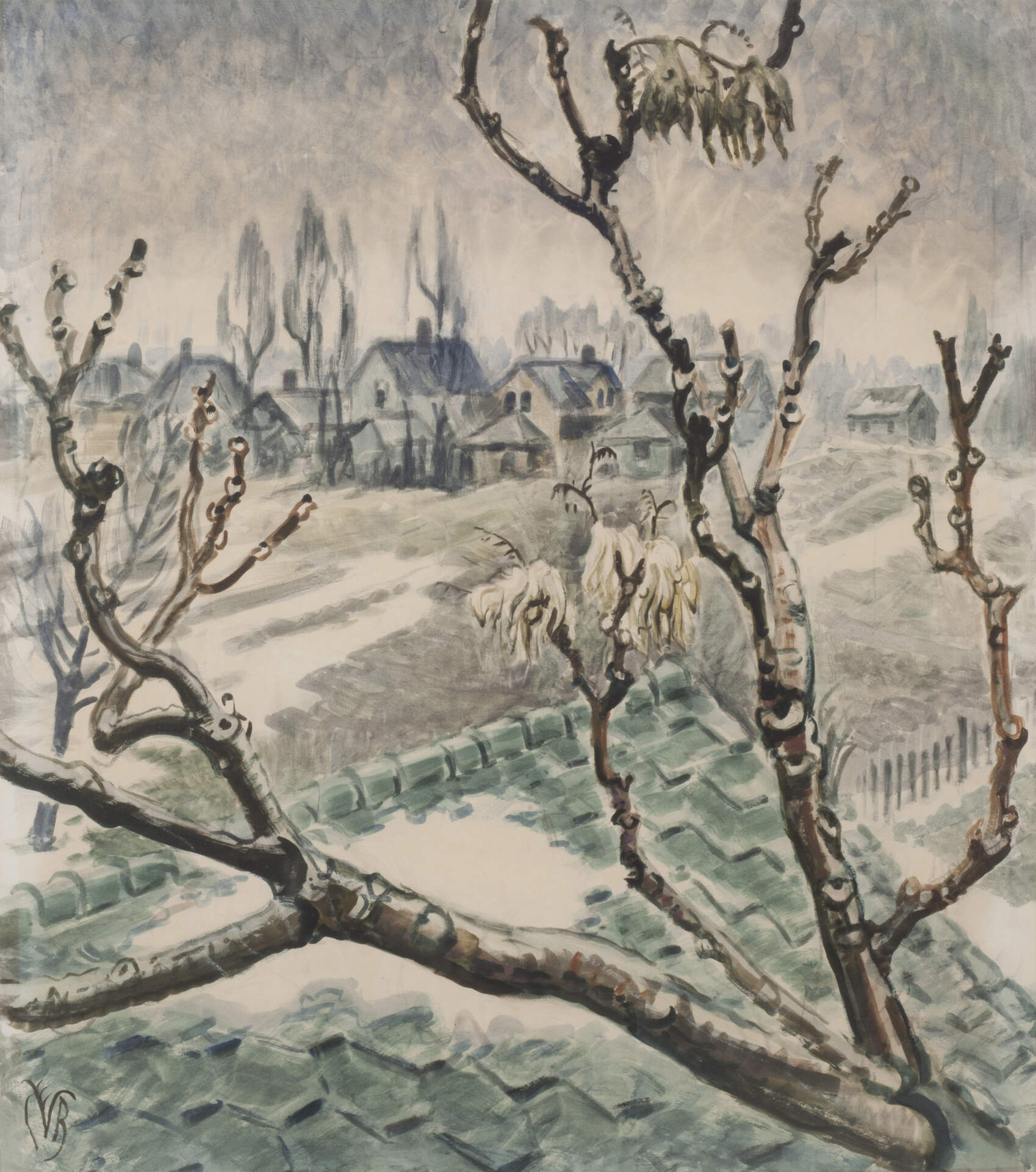Charles E. Burchfield (1893-1967)Ailanthus Branch in Winter
January 30, 1946
watercolor and graphite on paper
29 x 25 inches; framed 38 3/4 x 34 2/3 x 3/4 inches
Burchfield Penney Art Center, Gift of Dr. and Mrs. J. Alfred Fabro and Friends of Robert I. Millonzi, in memory of Robert I. Millonzi, 1986
Ailanthus Branch in Winter, painted in 1946, can be interpreted as a personal statement about religious conversion. As he noted, it is a "view from left rear bedroom, from back window- thru ailanthus branches & over garage roof." Having recently joined his wife's church after decades of agnosticism, Burchfield likely knew that the ailanthus was called the "Tree of Heaven," so he symbolically portrayed the dormant tree as a protective entity reaching skyward above his home. Ironically, the ailanthus is considered undesirable by many people; its flowers and foliage have a "disagreeable odor," its pollen can cause allergic reactions, its poisonous roots break into drain pipes and wells, and its crowds out other, more refined plants. Nevertheless, no plant held a lowly status for the artist. He championed all plants, defending the beauty of prevalent, invasive species that most people consider noxious weeds, such as dandelions and thistles. He used them as symbols for his personal aesthetics and philosophy that revered nature over all. (NW)
